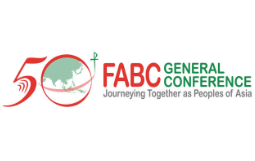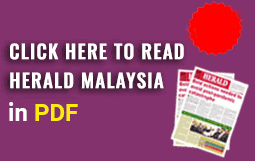Access to education – Opportunities and barriers
Pope Francis’ prayer intention at the beginning of this year focused on the right to education: ‘Let us pray for migrants, refugees, and those affected by war, that their right to an education, which is necessary to build a better world, might always be respected’.
Mar 22, 2025

Pope Francis’ prayer intention at the beginning of this year focused on the right to education: ‘Let us pray for migrants, refugees, and those affected by war, that their right to an education, which is necessary to build a better world, might always be respected’. In his prayer, he highlights some of the world’s most vulnerable groups — refugees, migrants, and those impacted by conflict. These individuals often face displacement, whether across borders to safer countries or within their own, seeking refuge in more stable regions. Their lives are marked by instability and constant uncertainty.
The Access to Education for Refugees
The United Nations High Commission for Refugees (UNHCR) has an office in Kuala Lumpur, even though Malaysia is not a signatory of the 1951 Refugee Convention and its 1967 Protocol. This makes refugees ‘illegal’ migrants and thus not eligible for entry into public schools and universities. Over the last 15 years of working with refugees with mental health disorders, Health Equity Initiatives, has found that one of the most common sources of stress for refugees in Malaysia is the lack of access to education for their children.
This lack of access is not only the lack of opportunities for education but also the lack of financial capacity to educate their children. The good news, though, is the setting up of schools for refugee children. One such school is the Kachin Refugee Learning Centre in Kuala Lumpur. Health Equity Initiatives and Monash University, Malaysia facilitated a project named PARSEL, which focussed on Socio- Emotional Learning (SEL) with the children at the Kachin Refugee Learning Centre. This project had good outcomes resulting in the holistic development of the refugee children, including inculcating resilience.
Barriers of Gender, Ethnicity and Socio-economic Status
It is a well-known fact that girls and women in low-income countries have less access to education compared to boys and men. Many refugees and migrants originate from low-income countries. A group of economically challenged female children and women who are discriminated against based on their ethnicity and religion are the Afghans from the Hazara tribe, who are Shia Muslims. Afghanistan has been a conflict torn country for the better part of half a century and is now ruled by the Taliban. The Taliban led government has banned girls above the age of 12 from continuing with their education.
There is a sizeable group of Afghan asylum seekers and refugees in Malaysia from the Hazara tribe. Some of the women were able to complete tertiary education. Health Equity Initiatives has engaged a few as refugee community health workers. These are intelligent and able young women who are committed to serving the refugee community they belong to. The opportunity to receive tertiary education made a positive difference in their lives.
The Children and Grandchildren of Migrants
Many of us in Malaysia, especially those who are ethnic Indian and ethnic Chinese, are children or grandchildren of migrants. Some of these migrants were educators. My grandfather, Thomas Vincent Pereira, who hailed from Kerala, India, was the headmaster of St Michael’s School, Alor Setar from the mid-1930s to the mid-1950s. He was a wellknown educator and the Malaysian Malayalee Catholic community knew him as Vincent Saar. He was also known to have brought the Senior Cambridge examinations to the school and thus created access to this examination for many boys who could not gain entry to the Sultan Abdul Hamid College, Alor Setar, which was the only school that offered the Senior Cambridge examinations in Kedah during that period.
I am a third-generation teacher. My parents were both teachers. My mother was the first woman graduate from her village in Kerala. She was the beneficiary of the access to tertiary education created by the former archbishop of Quilon, Archbishop Jerome Fernandez. The archbishop established Fatima College and my mother was amongst the first batch of students to study in the college and gain a degree in science and mathematics. She was a teacher at Fr Barre’s Convent, Sungai Petani for many years and in turn, provided access to quality education in her classes in school and in her Maths tutoring sessions.
In both the cases above, receiving access to education led to creating access to education for others.
The Catholic Church and Creating Access to Education
The Catholic Church has been providing access to education for centuries in many countries around the world. Both my grandfather and mother gained their degrees from Catholic institutions. In Malaysia religious congregations have handed over the administration of Catholic missionary schools to the government, though the land the schools are on still belongs to the religious congregations or the Malaysian Catholic Church.
Interestingly, the Infant Jesus congregation has taken back two of these schools, that is Light Street Convent, Penang and Pulau Tikus Convent, Penang with the intention of turning one into a private school and the other into a private university for women.
We hope that more of these schools will be reclaimed by the Catholic Church in Malaysia and turned into community schools, colleges and universities that provide holistic education to the young who, in turn, will make the world a better place to live in.
(Xavier V. Pereira is a medical doctor, psychiatrist, and psychotherapist, and a professor of Psychiatry at Perdana University. He is a co-founder and director of an NGO Health Equity Initiatives. In the Catholic Church he is the founding chair of the Catholic Counsellors and Therapists of Malaysia.)
The views expressed are entirely the writer’s own.







Total Comments:0